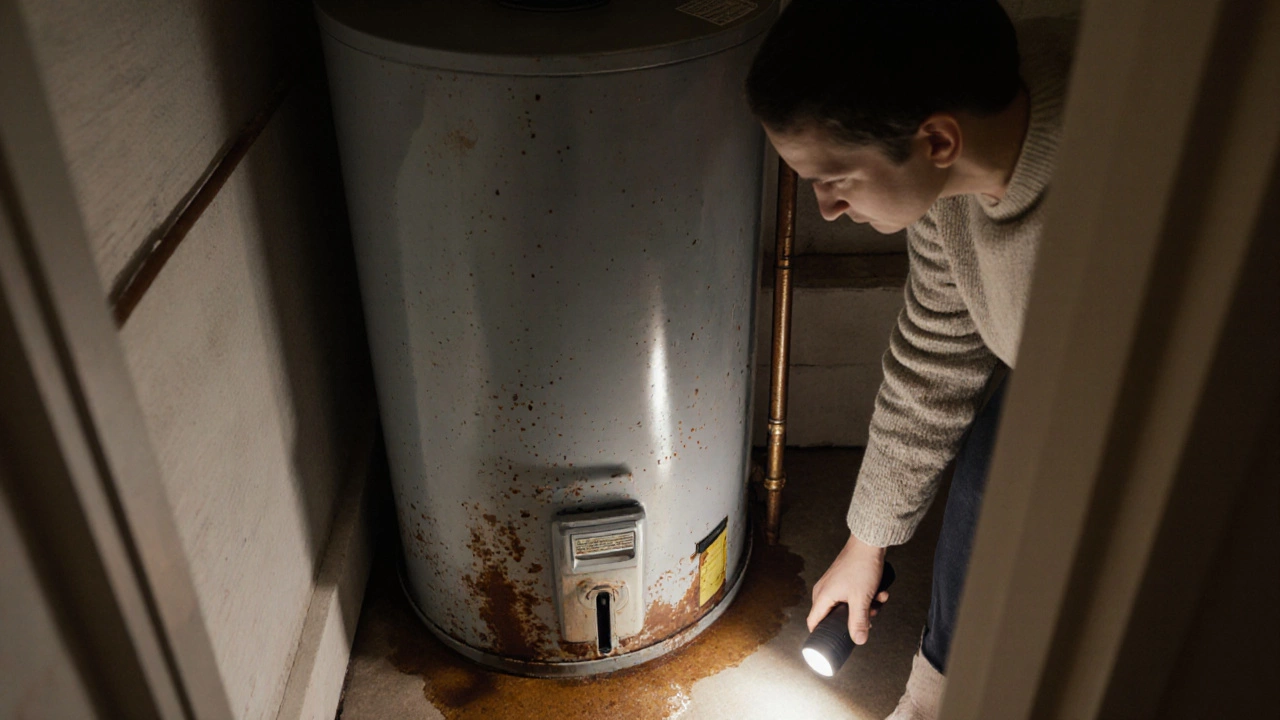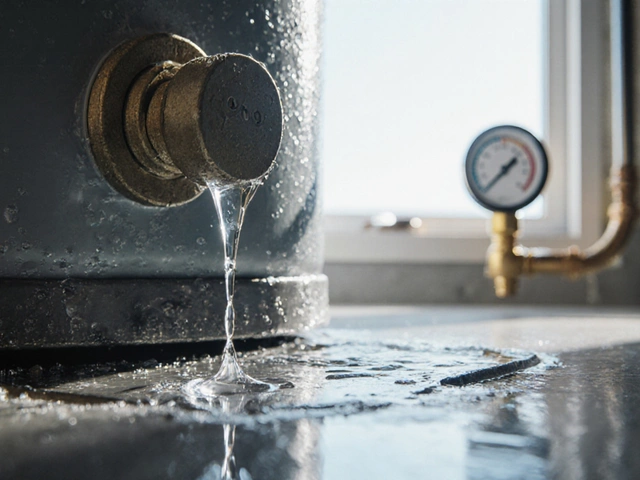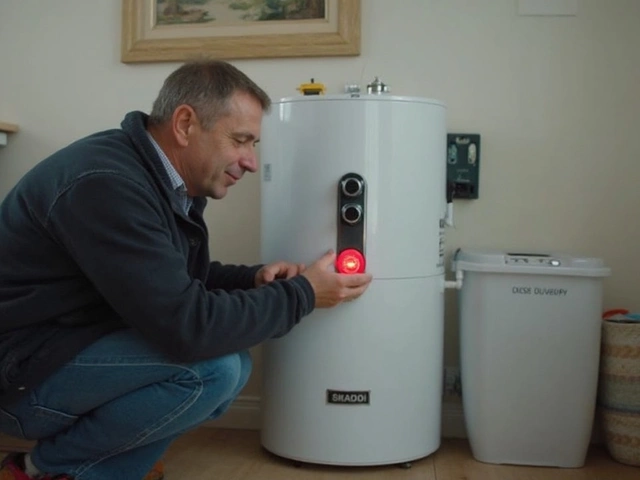Water Heater Repair vs. Replacement Calculator
Calculate whether repairing or replacing your 20-year-old water heater is the most cost-effective decision. Enter your current energy usage and costs to see the financial impact of both options.
Quick Takeaways
- A 20‑year‑old water heater is usually past its design life.
- Typical repair bills range from £80 to £250; a new unit costs £500‑£1,200 plus installation.
- Older heaters are far less efficient - you could waste 30‑40% more energy.
- If the heater shows signs of corrosion, frequent leaks, or thermostat failure, replacement is usually wiser.
- Regular maintenance can add 5‑10 years to a new heater’s lifespan.
When a water heater reaches two decades of use, homeowners start to wonder if fixing it makes financial sense, the answer isn’t always obvious. In the UK, many households still run older electric or gas units installed in the 1990s. This guide breaks down the real costs, the hidden energy waste, and the moments when swapping out the tank is the smarter move. By the end you’ll know exactly whether water heater repair is worth your time and money.
How Long Does a Water Heater Usually Last?
Modern manufacturers rate most electric and gas water heaters for 10‑15 years of reliable service. A few premium models with stainless‑steel tanks can stretch toward 20 years, but that’s the exception, not the rule. According to the British Standards Institution (BS), the BS 6920 covers the design and testing of domestic hot‑water systems recommends scheduling a full inspection after 12 years, because corrosion and mineral build‑up accelerate after that point.
Warning Signs Your Heater Is Near the End of Its Life
Before you even think about a repair bill, check for these tell‑tale symptoms:
- Visible rust or water stains on the tank’s exterior.
- Inconsistent water temperature - hot one minute, lukewarm the next.
- Strange noises (popping, rumbling) caused by mineral sediment.
- Frequent leaks around the pressure‑relief valve or bottom of the unit.
- Age‑related safety alerts, such as a failing flue in a gas‑fired heater that could allow carbon monoxide to escape.
If you notice two or more of these, the odds are the heater is far beyond its peak performance.
What Does a Typical Repair Cost?
Repair rates vary by fault and region, but here’s a realistic UK breakdown for a 20‑year‑old unit:
| Fault | Labour (per hour) | Part price | Total estimate |
|---|---|---|---|
| Thermostat replacement | £70‑£90 | £30‑£50 | £100‑£150 |
| Leaking pressure‑relief valve | £70‑£90 | £40‑£80 | £130‑£200 |
| Corroded heating element (electric) | £70‑£90 | £20‑£60 | £90‑£150 |
| Gas ignition module failure | £70‑£90 | £90‑£140 | £180‑£250 |
These figures assume a qualified water heater repair technician with gas safety certification (for gas units). If you need to call a specialist for a complex issue, the labour can climb above £120 per hour, pushing total costs into the £300‑£400 range - still lower than a full replacement but often not a great long‑term investment.
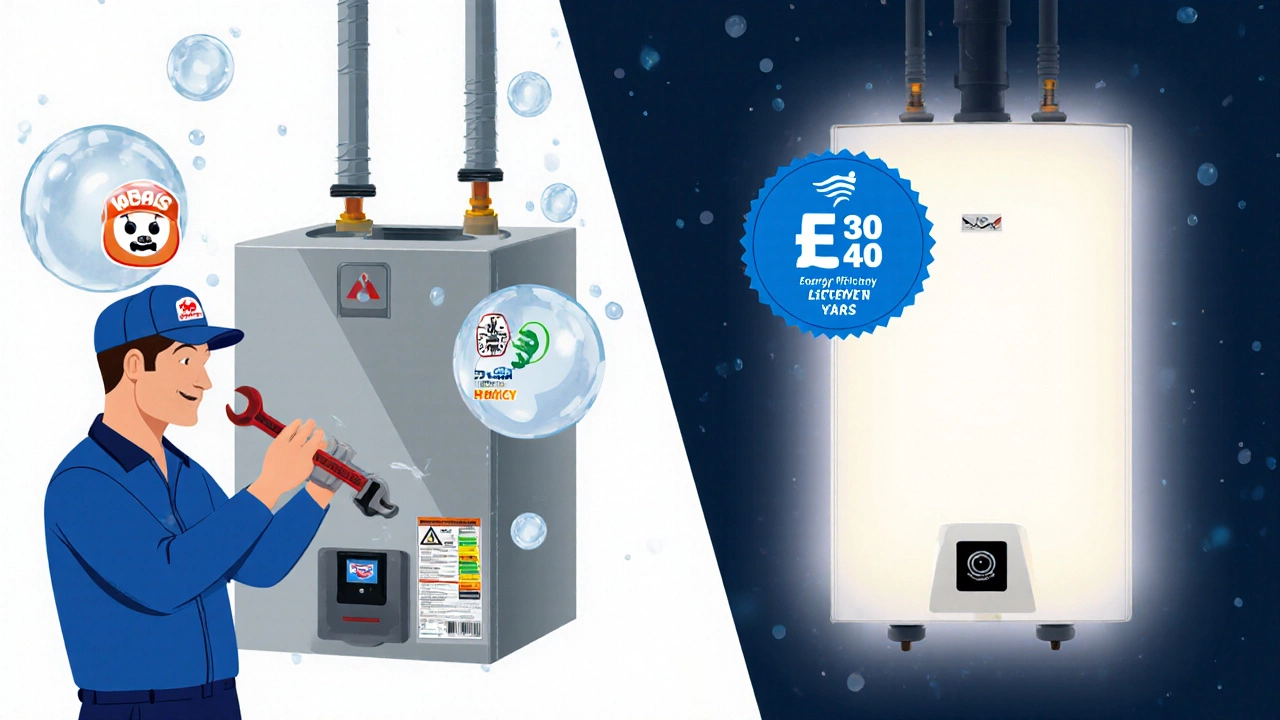
Energy Efficiency: The Hidden Money‑Drainer
Older heaters were built to meet legacy standards. A typical 20‑year‑old electric water heater has an energy efficiency rating of around 80%, meaning 20% of the electricity you pay for disappears as waste heat. Modern tankless water heater can reach 95%‑99% efficiency because they heat water on‑demand instead of keeping a full tank hot.
The EU Ecodesign Directive, enforced in the UK post‑Brexit, now mandates a minimum energy efficiency rating of E for new electric water heaters. If your 20‑year‑old unit sits at a D or lower, you’re likely paying 30‑40% more on your energy bill than you would with a compliant model.
Repair vs. Replacement - A Side‑by‑Side Look
| Factor | Repair | Replace |
|---|---|---|
| Up‑front cost | £80‑£250 | £500‑£1,200 (unit) + £150‑£300 installation |
| Energy savings | Minimal - old efficiency remains | 30‑40% lower annual electricity/gas usage |
| Expected lifespan after action | 2‑5 years (if the tank itself is sound) | 10‑15 years (newer models) |
| Risk of repeat failure | High - age‑related corrosion persists | Low - modern materials resist rust |
| Impact on home insurance | May increase premiums if deemed unsafe | Generally neutral or can lower premiums |
When you add the long‑term energy savings, a brand‑new, high‑efficiency heater often pays for itself within 3‑5 years, especially in a typical British household that uses around 150 kWh of hot water per month.
When Replacement Makes the Most Sense
Consider a swap if any of the following apply:
- The unit is leaking from the tank itself - that’s a sign of internal corrosion that repair can’t fix.
- You’ve had two or more repairs in the past 12 months.
- Energy bills have risen noticeably without a change in usage patterns.
- Your home insurance provider flags the heater as a fire or carbon‑monoxide hazard.
- You’re renovating and can combine the replacement with other plumbing upgrades, saving on labour.
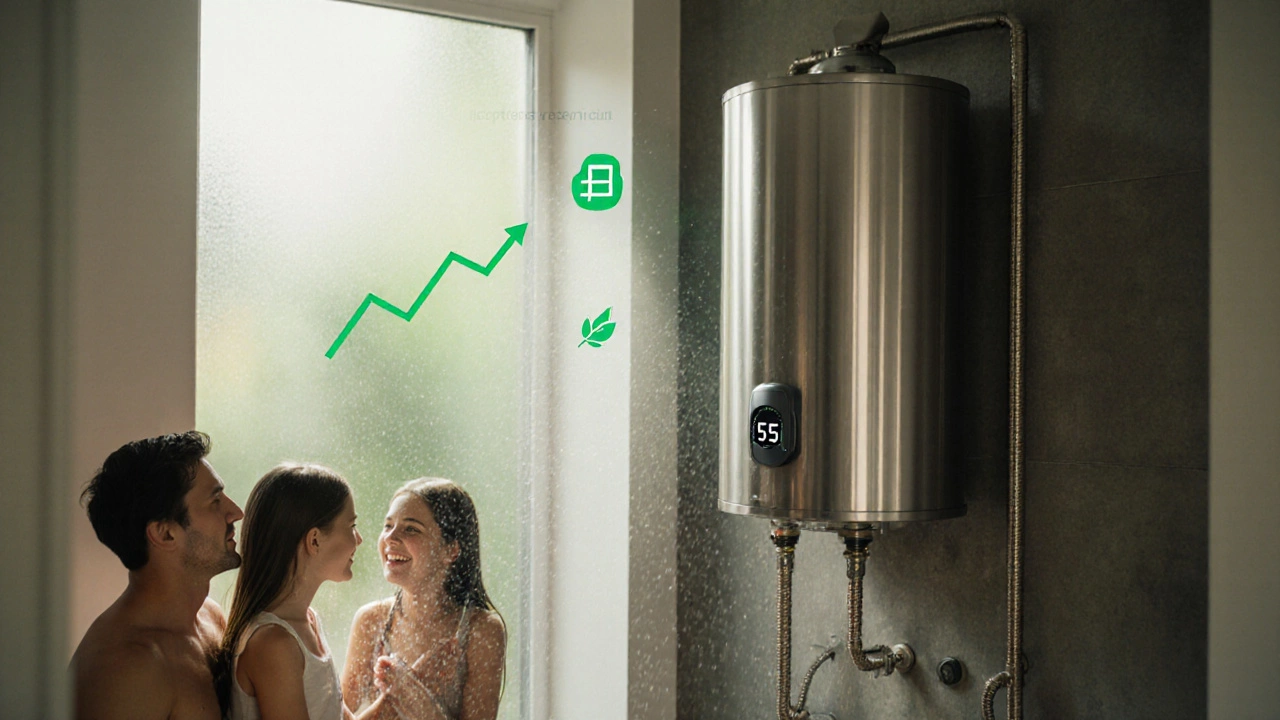
DIY vs. Professional Repair Tips
If you’re handy and the problem is minor (a faulty thermostat or a simple valve), you can save £50‑£100 by doing it yourself. Always turn off the power or gas supply, drain the tank, and follow the manufacturer’s safety guidelines. For anything involving gas, electrical connections, or the internal tank, call a certified water heater repair professional with a Gas Safe Register certificate. A botched fix can void warranties, raise insurance premiums, and even cause safety incidents.
Extending the Life of a New Heater
Once you’ve installed a newer model, keep it healthy with these habits:
- Flush the tank once a year to remove sediment that reduces efficiency.
- Check the pressure‑relief valve annually for proper operation.
- Set the thermostat to 55‑60 °C - hot enough for hygiene, but not excess energy waste.
- Insulate older tanks with a ready‑made jacket; this can recoup up to 10% of heating costs.
- Schedule a professional inspection every 2‑3 years, especially for gas‑fired units.
Bottom Line - Should You Repair?
For a 20‑year‑old heater, the odds tip heavily toward replacement. Repair might make sense only if the tank itself is solid, the fault is cheap (like a thermostat), and you’re prepared for higher energy bills until the next replacement cycle. In most British homes, swapping to an EU‑compliant, high‑efficiency model saves money, improves safety, and reduces carbon footprint.
Frequently Asked Questions
How long can I expect a brand‑new water heater to last?
Modern units, when maintained, typically provide 10‑15 years of reliable service. Premium stainless‑steel tanks can stretch toward 20 years.
Is it cheaper to keep an older electric heater than to switch to gas?
In most of the UK, gas is cheaper per kilowatt‑hour, but conversion costs (flue, pipework, safety checks) can outweigh the savings for a single household. A high‑efficiency electric model may be cheaper overall if you have a renewable electricity tariff.
Can I claim any grant for replacing an old water heater?
The UK’s Boiler Upgrade Scheme focuses on boilers, not water heaters. However, certain local councils offer “energy efficiency” grants that can cover a high‑efficiency tankless system. Check your council’s website for the latest schemes.
What safety checks should I do after a gas water heater repair?
A certified Gas Safe engineer must test for carbon‑monoxide leakage, verify proper flame turnout, and ensure the flue is clear. Install a carbon‑monoxide detector near the heater for extra peace of mind.

